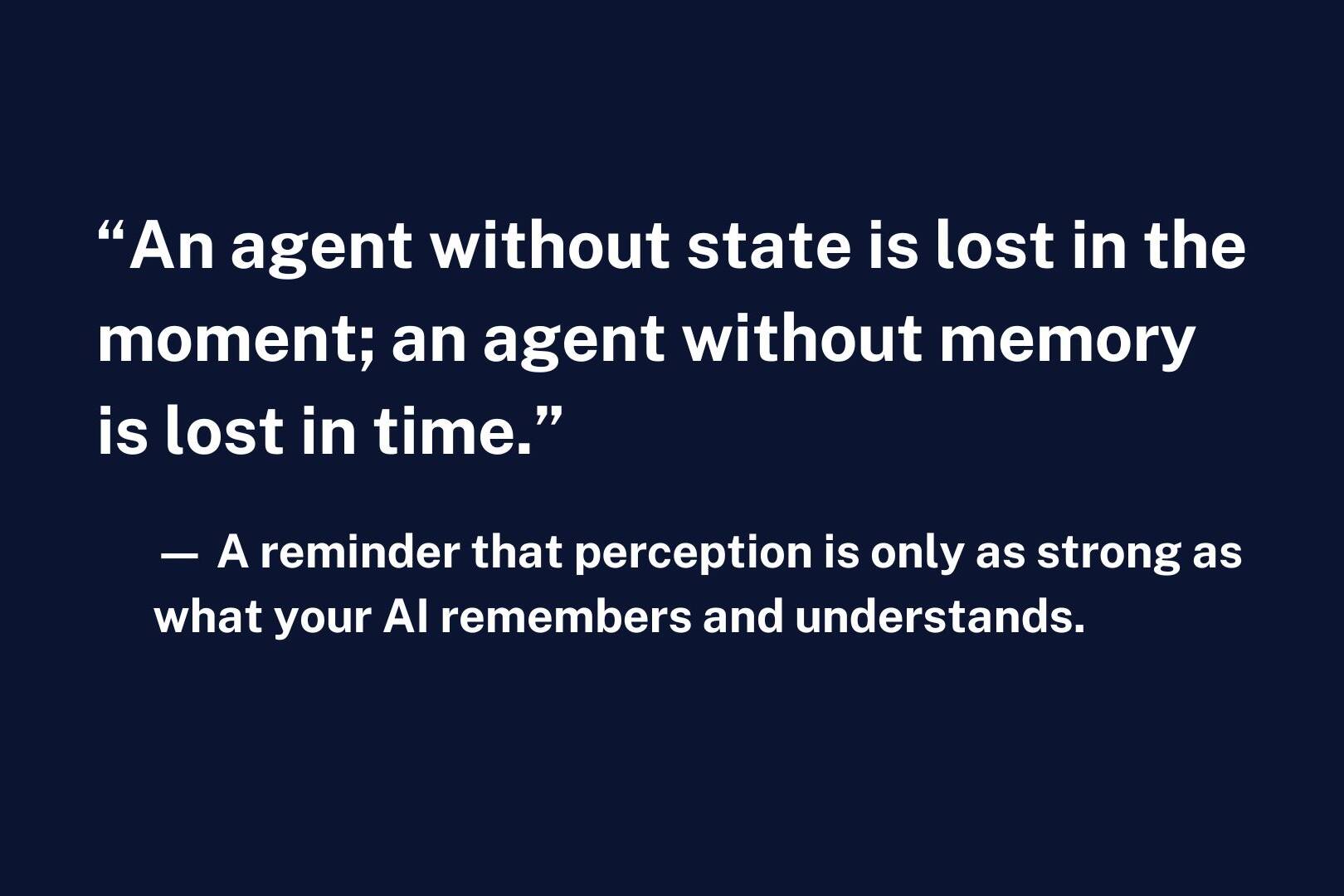“Without perception, there is no intelligence — only automation.”
In the previous article, “What Are AI Agents? An Introductory Guide To The Agentic AI For 2025,” we were introduced to the architecture of an AI Agent and its four components: Perceive, Reason, Act, and Learn. In this article, we will expand upon the perception aspect a bit.
Perception is how an AI Agent understands its environment.
It’s the sensory input layer — what humans do with eyes, ears, and touch — agents do via:
-
APIs
-
Data streams
-
User inputs
-
System events
-
Webhooks
-
Sensor data (IoT context)
What Does “Perception” Mean for AI Agents?
An agent is only as good as its understanding of the current situation.
It must:
-
Detect what’s happening
-
Extract structured data
-
Filter out noise
-
Interpret intent
-
Maintain awareness of its environment
Perception in AI Agents Has 3 Main Layers:
|
Layer |
Purpose |
Example Technologies |
|---|---|---|
|
Data Acquisition |
Collect inputs from the environment |
APIs, Webhooks, Sensors |
|
Input Understanding |
Parse and structure data |
Natural Language Processing, Data Processing Pipelines |
|
Context Awareness |
Maintain environmental state |
Memory Stores, Context Windows |
Perception Sources for AI Agents:
|
Input Type |
Source |
Use Case |
|---|---|---|
|
Natural Language |
User chat or voice |
Customer support, personal assistants |
|
System Events |
Application logs, status alerts |
Monitoring systems, DevOps agents |
|
Data APIs |
CRM, ERP, Cloud databases |
Sales automation, finance agents |
|
Sensor Data |
IoT devices |
Smart home, logistics tracking |
|
Digital Activity |
User behavior data, clickstreams |
Personalization, recommendations |
What Happens After Perception?
Once an AI Agent perceives the environment, it moves through:
Perception → Reasoning → Action → Learning
If perception fails, the rest of the agent architecture crumbles.
Example:
If a personal finance AI agent misinterprets a user’s expense data, its budgeting advice will be useless or wrong.
Characteristics of Strong Perception in AI Agents:
-
Real-time input handling
-
Multi-modal capability (text, audio, visual)
-
Contextual understanding (not isolated commands)
-
Ability to ask clarifying questions if uncertain (LLM-powered agents excel at this)
-
Noise filtering and relevance scoring
How Founders & Product Managers Should Think About Perception:
In product design, perception is the “input experience.”
Great AI agents should:
-
Ask smart, clarifying questions
-
Understand incomplete or ambiguous inputs
-
Handle errors gracefully
-
Avoid false assumptions
Future of Perception in AI Agents:
-
Agents perceiving the digital environment like humans perceive the physical world
-
AI Agents that auto-detect user frustration
-
Agents that sense opportunities based on real-time data patterns
Related Posts
May 14, 2025
State and Memory in Agentic AI: Why Every Leader Should Understand These Core Concepts
As Agentic AI systems become central to modern automation, understanding the…
March 3, 2021
What Are AI Agents? An Introductory Guide to Agentic AI for 2025
Understanding the architecture, use cases, and why Agentic AI is reshaping the…


